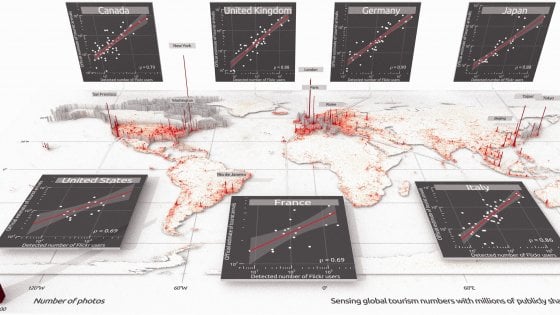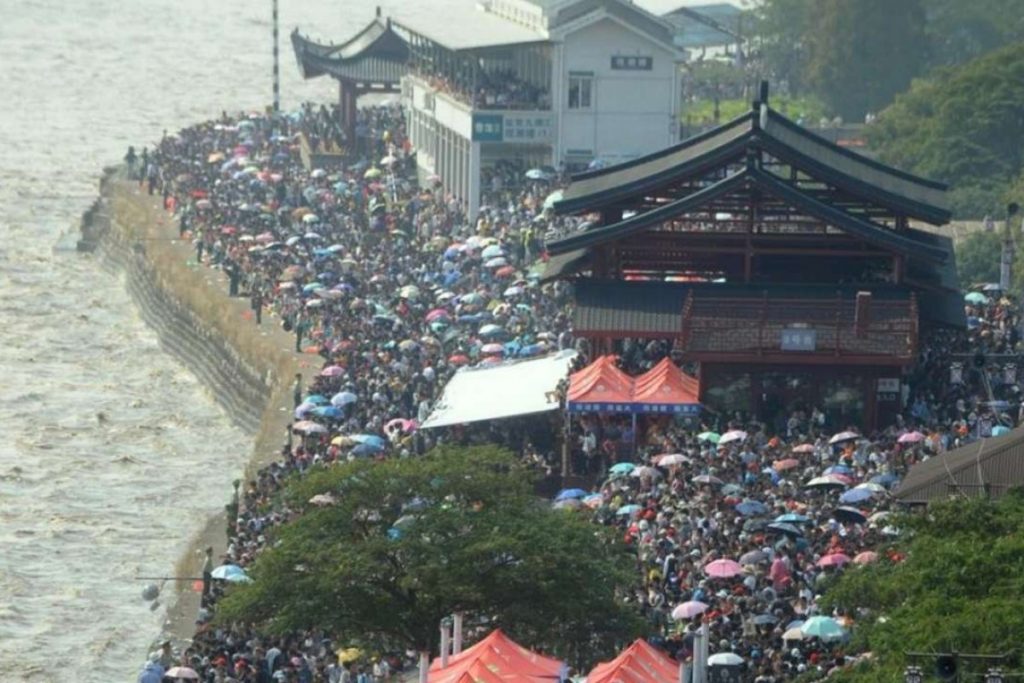A study by the University of Warwick used geolocated images shared publicly on Flickr to understand the movements of over half a million users of the photographic platform. The results – obtained at no cost – correspond to the official statistics, which normally need months to be processed.
TO UNDERSTAND where the world population is going on vacation and how many tourists have arrived in country last year all we need is just an algorithm. An algorithm that feeds on the photos posted on social media: shots of cocktails, beaches and sunsets that not only serve to make friends envious, but can also be analyzed and used to monitor tourist flows on a global scale. This is suggested by a new study conducted by the University of Warwick, in the United Kingdom, and published in Environment and Planning A , an academic journal of urban planning. A research that has exploited the geolocated images shared publicly on Flickr to understand the movements of over half a million users of the photographic platform.

The starting idea was simple, Federico Botta, researcher of the Data Science Lab and one of the authors of the analysis, explains “Everybody publishes photos from the places they go on vacation – he says – so we thought that, analyzing them on a large scale, we would be able to get a picture of how many tourists arrive in a particular country and where they come from, information available in real time and at no cost, contrary to the statistics compiled today that are released only months later and require a great deal of resources “. To test their hypothesis, scholars collected 69 million images posted on Flickr between January 1, 2013 and December 31, 2014, to which users associated the location. Then came the most difficult part: understanding the country of residence of those users.
“For each photo we determined the day it was taken and the location added,” continues Botta. “Then the data were processed by an algorithm that allowed us to establish the place from which a person had posted multiple photographs.” If, for example, a user had taken most of the images in the United States before making one in the country whose scientists were estimating the flow of tourists, he was considered resident in the United States. A system that allowed Botta and colleagues to understand how many tourists in 2014 were on holiday in Italy, France, Germany, the United Kingdom, Canada, Japan and the United States, as well as their origin. The researchers did not make actual estimates,

The study does not lack limitations: first of all, in this case, the data available only on Flickr were used, excluding Instagram, the social media of choice when it comes to sharing shots, including those of the holidays. A choice that limits the representativeness of the considered sample. Moreover, to establish the users’ country of residence, scholars started from a simplistic assumption: on days when a user did not post any photograph, it is assumed that he is in the same place where he took the previous one. Despite this, the results obtained are in line with the official statistics of the countries taken into consideration (in Italy those compiled by Istat), focusing the spotlight on the potential of the analysis of large data to understand tourist flows and, more generally, the state of society.
Moreover, It is not the first time that the algorithms prove to be capable of monitoring situations in real time, thanks – once again – to the gigantic amount of data that we make available daily online. In 2015, a study signed by the University of Warwick itself showed that it was able to use tweets and data from mobile phones to quantify the size of the crowd. In particular, they had compared the number of spectators at a football match at San Siro – calculated using geolocalised tweets, phone calls and online connections made via smartphone – with the actual audience that was known because of the tickets sold at the entrance. The estimates had been fairly accurate, with a margin of error between 10 and 20 percent.
A capacity that can be used for a good purpose, as to better prepare the structures and resources for welcoming tourists. But also to implement a surveillance status. In this direction, three years ago, a study by Baidu, the Chinese research giant, caused a sensation. His scientists had succeeded in developing a system capable of anticipating by a few hours the formation of large gatherings of people in certain areas, analyzing the research done on Google’s online maps of China and comparing them with the real movements of people geolocated through the application.
And although a company spokesman at the time made it clear that the mechanism was not designed to detect unwanted protests, who can say that one day the authorities do not exploit it for this purpose? “The data we share online can be used in an infinite number of ways – concludes Botta -. The task of the research is also to show its potential uses, so that users become more aware”.































Discussion about this post